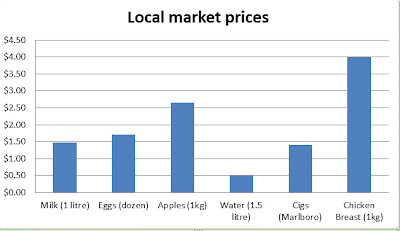Indonesia is globally known as the world's largest archipelago, consisting of over 18,000 islands. Indonesia is divided into 3 groups: Greater Sunda Islands (includes the 5 major islands: Sumatra, Java, Sulawesi and Kalimantan), Lesser Sunda Islands (in the south-east, near East Timor), Moluccas and Irian Jaya (a part of Papua New Guinea)
latitude of 5° 00' N and longitude of 120° 00' E.

Law
Here is some laws that all tourists should know:
1. Drug trafficking is punishable by death
2. Gambling is illegal
3. Indonesia has a statute of limitations on crimes, in Indonesia's case it is just 3 years
4. Do not stay beyond your visa for a Visa on Arrival 30 days is ok, each day after 30 days is 20/day for 30 days then it can be jail or a fine.
5. Don’t give to beggars it’s a fine
6. The Indonesian child protection law imposes up to 15 years in prison for those convicted of engaging in sexual contact with a child
7. Under Indonesian law, you must carry identification
8. To drive in Indonesia, you will require an Indonesian or international driver's license.
9. You should obey signs that prohibit photography. If in doubt, seek advice from local officials. Especially in the shopping Malls, blok.M, the Ritz Carlton, and stock exchange they don’t allow cameras security will tell you to put it away.
10. only an Indonesian can purchase land in Indonesia
11. Three regions in Indonesia that you cannot visit without special permission and approval are Aceh, Maluku, and Irian Jaya. If you plan to enter one of these restricted regions, you must obtain special authorization from Indonesian authorities.
Food
A typical Indonesian meal consists of steamed rice and one or two main dishes made of fish, meat, chicken or vegetables, sometimes including soup, all of which are served together. A common side dish is sambal.
Food is eaten with the fingers or with a spoon and fork. When eating with the fingers, Indonesians use their right hand only. The left hand is used for less hygienic matters. They always leave some food on the plate or drink in the glass to indicate that they have had enough.
A popular Indonesian dish is satay served with peanut sauce, ketupat, cucumber and onions.
These are the local prices:
Language
Bahasa Indonesia is the official language of Indonesia. It is the standardized version of Malay and is the 6th most widely spoken language in the world. People of Indonesia also have a regional language, such as: Sundanese, Javanese and Madurese. During the time of the Dutch colony, the Latin alphabet was introduced and a few Dutch spellings were used.
Here is an example of the basic words:
How are you: Apa kabar
Thankyou: Terima kasih
Good: Bagus
Good morning: Selamat pagi
Good Night: Selamat malam
Please: Bersih
Tourism
The number of international tourists arriving in Indonesia climbed 9.24 percent to 7.65 million arrivals from about 7 million in 2010. Length of stay set at 7.84 days by an average spend of US$1,118.26 per visit
Government
The Indonesian government is a republic as the head of the state is elected after regular elections. The current President is Susilo Bambang Yudhoyono AC, who is an Indonesian politician and retired Army general officer who has been President of Indonesia since 2004.
Natural Disasters
In the past few years, Indonesia has seen more than its fair share of natural disasters. From volcanic eruptions to tsunamis to earthquakes and more, it would seem that the forces of nature have it in for this beautiful tourist haven.
Indonesia is located along the "Ring of Fire", an unstable collection of tectonic plates surrounding the Pacific Ocean, which have caused many of Indonesia's recent natural disasters, from the massive tsunami in 2004 to six earthquakes measuring over 7 on the Richter scale within the past two years.
In addition to being the epicenter for quake activity, Indonesia is home to over 150 active volcanoes, many of which are close to major tourist centers.
In addition to being the epicenter for quake activity, Indonesia is home to over 150 active volcanoes, many of which are close to major tourist centers.
Indonesia has always been a hotbed of earthquake activity, but in the past few years there have been more deadly quakes than usual. In general, the western islands of Sumatra and Java are more in danger of earthquake activity than the central or eastern islands.
In September 2009, the island of Java was hit by a 7.4 earthquake. Sumatra was hit by powerful quakes in October 2009, April-May 2010, and October 2010. In particular, aftershocks from the October 2010 earthquake around the Mentawai Islands prevented tourists from visiting the northern part of Sumatra for the final months of 2010 and the beginning of 2011.
Don't assume you're completely safe just because you choose to visit centrally located Bali or eastern Papua, however. The entire area is quake-prone.
Hotels in Indonesia all have evacuation plans and natural disasters are so common that nearly every public facilities have an evacuation plan.
Don't assume you're completely safe just because you choose to visit centrally located Bali or eastern Papua, however. The entire area is quake-prone.
Hotels in Indonesia all have evacuation plans and natural disasters are so common that nearly every public facilities have an evacuation plan.


No comments:
Post a Comment
Note: only a member of this blog may post a comment.